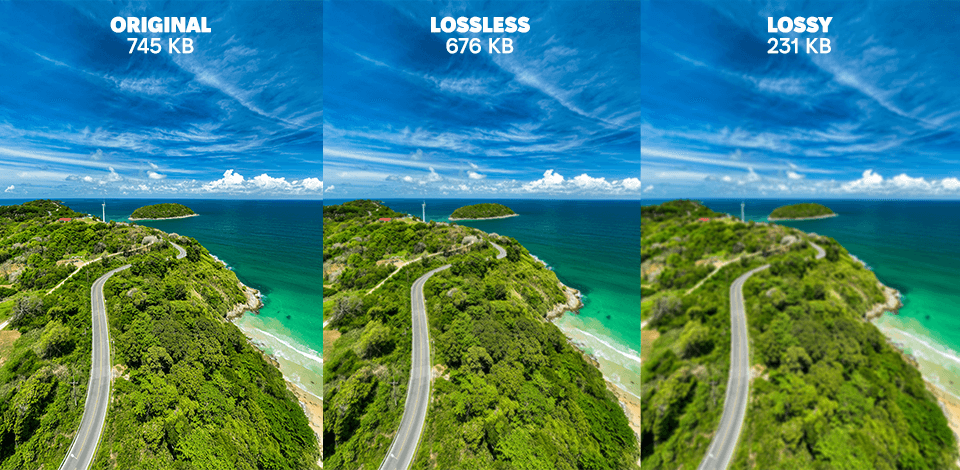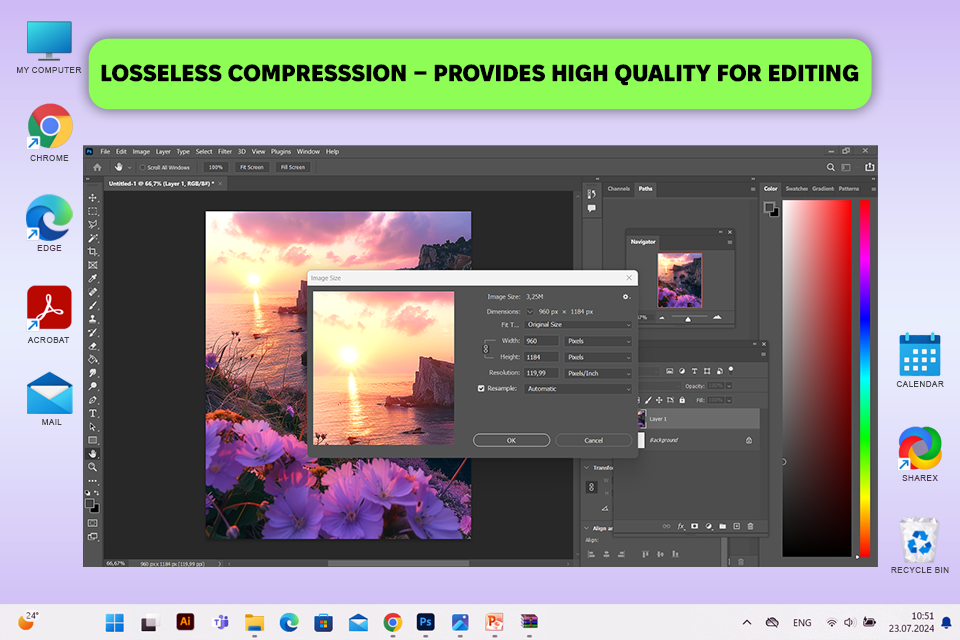
After pitting lossless vs lossy compression techniques in a variety of scenarios, I concluded that it’s best to use lossless compression for images that require intricate retouching and need to preserve their perfect quality. For less important photos, like the ones I post on social media or in my online portfolio, I prefer to use lossy compression.
As someone who works with a large number of images, I understand how important it is to preserve image quality, especially during post-processing. However, the reality is that storing hundreds of high-resolution photos takes up a lot of space, which becomes a problem over time, which is why many people want to find out the difference between lossy compression vs lossless compression to know which type to use in which situation.

✔️Images can be decompressed to restore their original file structure
✔️Superior quality for retouching
✔️Great choice for archiving
✔️Perfect fit for documents, photos, sound, and even executable files
❌ Bigger file sizes
❌ Takes up more storage space and bandwidth
If you pit lossless vs lossy compression techniques, you’ll notice that the former can decrease file size without sacrificing any data. Should you decompress the file, it will regain its original structure. This approach is often employed when you value file integrity and quality above everything else, be it a text file, a high-resolution photo, or an important audio track.
It can be applied using different image optimizers that will maintain their high quality while still reducing the amount of space they take up on your device.

✔️Dramatically reduces file size
✔️More bandwidth-efficient
✔️Ideal for storing large quantities of files
✔️Streamlines file management
❌ Noticeable quality decrease
❌ Repeated retouching and saving of lossy images lowers their quality with each round of changes
On the other end of the lossless vs lossy image compression battle, you have a technique that minimizes JPEG, GIF, and PNG images by irreversibly deleting portions of their file data. It gets rid of some detail to provide more substantial file size reductions, which is perfect if you’re running out of storage space on your device or want to quickly upload content to a website or social media platform by using image or video compression apps. This technique is also very helpful for reducing page load times.
| Lossless Compression | Lossy Compression | |
|---|---|---|
|
Data Integrity |
100% maintained
|
Parts of the data are data permanently deleted
|
|
File Quality
|
Original quality preserved
|
Subtle to noticeable quality decrease
|
|
File Size
|
Lowered, but not substantially
|
Significantly reduced
|
|
Use Cases
|
Documents, high-quality photos, archival audio
|
Streaming content, web images, regular audio files
|
|
Examples
|
PNG, FLAC, ZIP
|
JPEG, MP3, MP4 |

The main distinction is the former preserves all original data, meaning you can restore the original version of your image, text, or video file formats. At the same time, the latter irreversibly deletes portions of the data to provide a smaller file size at the price of quality preservation.
Lossless compression is perfect for any scenario that requires you to preserve the quality of your image or illustration, especially if you plan to edit it later. It can also be used to archive files in their original form.
Ordinarily, no. For high-quality printing, lossless formats like PNG or TIFF are highly recommended. Lossy formats like JPG tend to be less detailed and can even have artifacts that are visible on large-scale prints.
No, after data has been deleted via lossy compression using image or video compression software, it’s impossible to recover it. If you transform a lossy file to a lossless format it will have the same level of detail and quality without any improvements.
For lossless compression, PNG, TIFF, FLAC, and ZIP are the go-to options among the highest quality image formats. For lossy compression, JPEG, MP3, and MP4 are the default choices for image, audio, and video files.
Lossy compression is great for substantially lowering the file size, making it easier to store, upload, and download large numbers of images or videos. Lossless files take up more space and also require more time to transfer.
Yes, editing and continuously saving lossy images gradually lowers their quality even more. Every save applies another round of compression, which accumulates the amount of lost data. That isn’t an issue with lossless compression.
No, lossless formats are usually too big for streaming, which offers optimal performance when dealing with such lossy formats as MP3 and MP4 to reduce buffering and decrease load times while still offering solid quality.